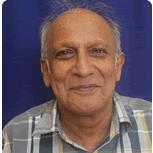International Journal of Computer Network and Information Security (IJCNIS)
IJCNIS Vol. 10, No. 5, 8 May 2018
Cover page and Table of Contents: PDF (size: 906KB)
Security Evaluation of Cellular Networks Handover Techniques
Full Text (PDF, 906KB), PP.45-59
Views: 0 Downloads: 0
Author(s)
Index Terms
Denial of service, GSM, handovers, masquerading, neuro-fuzzy, session hijacking
Abstract
This paper examined the handovers in cellular networks from both functional and informational security point of view. The aim was to find out if the security goals of confidentiality, integrity and availability (CIA) are preserved during handovers. Whereas functional security is concerned with the proper operation of the handover procedures, informational security deals with confidentiality and integrity of the handover process. The global system for mobile communication provides data and voice communication services by partitioning coverage areas into hexagonal cells. Since mobility is a prime feature of cellular networks, handovers become significant for the continuity of ongoing calls. However, if these handovers are not handled carefully, session hijacking, masquerading and denial of service can be launched by transmitting at the correct timeslot and frequency. The results of the security investigation of the current handover techniques, methods, procedures, schemes and criteria revealed that the CIA triad was not assured during the handover period. The root cause of these attacks is high latency between handover request and handover execution. To address these shortcomings, this paper proposes an authenticated multi-factor neuro fuzzy handover protocol with low latency for both homogenous and heterogeneous cellular environments.
Cite This Paper
Vincent Omollo Nyangaresi, Silvance O. Abeka, Anthony Rodgrigues, "Security Evaluation of Cellular Networks Handover Techniques", International Journal of Computer Network and Information Security(IJCNIS), Vol.10, No.5, pp.45-59, 2018. DOI:10.5815/ijcnis.2018.05.06
Reference
[1]O. Osahenvemwen & F. Odiase, “Effective management of handover process in mobile communication network”, Journal of Advances in Technology and Engineering Studies, Vol. 2, Issue 6, pp. 176-182, (2016).
[2]A. Babiker, H. Ahmmed & S. Ali, “ Comparative Study 1st, 2nd, 3rd, 4th, Generations from Handoff Aspects”, International Journal of Science and Research, Vol. 5, Issue 6, pp. 934-941, (2016).
[3]B. Ravishankar, “Authentication and related Threats in 2G/3G/4G Networks”, Department of computer science, Oxford University, pp.1-64, (2016).
[4]P. Copet, G. Marchetto, R. Sisto & L. Costa, “Formal Verification of LTE-UMTS Handover Procedures”, IEEE, pp.1-8, (2015).
[5]Y. Lai, P. Cheng, C. Lee, & C. Ku, “A New Ticket-Based Authentication Mechanism for Fast Handover in Mesh Network”, Department of Photonics and Communication Engineering, Asia University, Taichung, Taiwan, pp. 1-18, (2016).
[6]Y. Lin, W. Longjhuang & C. Chen Yang, “Enhanced 4G LTE Authentication and Handover Mechanism”, International Journal of Electrical, Electronics and Data Communication, Vol. 3, Issue 9, pp. 45-47, (2015).
[7]K. Kastell, U. Meyer & R. Jakoby, “ Secure Handover Procedures”, Department of Computer Science, Darmstadt University of Technology, pp. 1-5, (2013).
[8]E. Donald & F. Nosa, “Analysing GSM Insecurity”, International Journal of Research and Scientific Innovation, Volume 3, Issue 10, pp. 10-18, (2016).
[9]L. Jagadesh, I. Kullayamma & V. Naresh, “Handover Analysis”, International Journal of Engineering Research and Applications, Vol. 1, Issue 2, pp.287-291, (2015).
[10]D. Girhepunje & A. Bhute, “A Survey: Handover scheme of High-Speed Train Environment”, International Research Journal of Engineering and Technology, Vol. 03 Issue 3, pp. 998-1002, (2016).
[11]D. Agrawal, & M. Mankar, “Mobility Management Vertical And Horizontal Handover Decisions In Heterogeneous Wireless Networks Using OMNET”, Vol. 7, Issue 2, pp. 557-562, (2016).
[12]A. Galadima, “Analysis And Optimization Of Inter Cell Handover Dynamics In A GSM Network”, Masters Thesis, Faculty Of Engineering, Ahmadu Bello University, Zaria, Nigeria, (2014).
[13]H. Kaur & A. Kaur, “Various Handover Management Techniques In GSM Cellular System”, International Journal of Advanced Engineering Research and Science, Vol. 1, Issue-2, pp.28-33, (2014).
[14]S. Acharya & T. Gaba, “A Review: Handover in 3G/UMTS Network”, International journal of Emerging Trends in Science and Technology, Vol. 1, Issue 3, pp. 332-339 (2014).
[15]J. Karishan “Study and Analysis of Call dropping and Handover Problem in cellular system”, International Journal of Advanced Research in Computer Engineering & Technology , Vol. 5, Issue 6, pp. 1776 -, 1777 (2016).
[16]R. Hasdah & A. Kumar, “Study Of Soft Handover In Third Generation Cellular Network”, International Journal of Innovative Research in Technology & Science, pp. 1-8, (2015).
[17]C. Sayankar & N. Mane, “Handover Scheme for Mobile Relays in LTE-A High Speed Rail Network: A review”, International Journal of Innovative Research in Computer and Communication Engineering, Vol. 4, Issue 4, pp. 6933- 6936, (2016).
[18]T. Juang, H. Lin & D. Lin, “An Improved Location-Based Handover Algorithm for GSM Systems”, Institute of Computer and Communication, National Taipei University of Technology, Taipei, Taiwan, pp. 1-13, (2014).
[19]D. Sharma & K.Singh, “Analysis of Handover Initiation using Path Loss to Sustain QoS”, International Journal of Scientific & Engineering Research Volume 3, Issue 5, pp.1-6, (2012).
[20]N. Haider, “A Handover Technique For Inter- And Intra- Domain Proxy Mobile IPv6 In Vehicular Network Environment”, Doctor of Philosophy Thesis, Faculty of Computing Universiti Teknologi, Malaysia, (2013).
[21]L. Chunming & C. Zhou, “Challenges and Solutions for Handoff Issues in 4G Wireless Systems An Overview”, International Latin American and Caribbean Conference for Engineering and Technology, pp.1-6, (2004).
[22]S. Katiyar & K. Agrawal, “Hierarchical Cellular Structures in High-Capacity Cellular Communication Systems”, International Journal of Advanced Computer Science and Applications, Vol. 2, Issue 9, pp. 51-57, (2011).
[23]M. Shiuan P. Lin, & W. Chen, “An Enhanced handover scheme for mobile relays in LTE-A high speed rail network,” IEEE Transaction on vehicular technology, Vol. 64, Issue 2, pp 743-755, (2015).
[24]G. Abednego, D. Danjuma & G. Buba, “The Analysis Of Inter Cell Handover Dynamics in A GSM Network”, International Journal of Innovative Research in Science, Engineering and Technology, Vol. 3, Issue 6, pp. 13444- 13451, (2014).
[25]S. Banerjee, M. Hempel & H. Sharif, “A Survey of Wireless Communication Technologies & Their Performance for High Speed Railways”, Journal of Transportation Technologies, Vol. 6, pp. 15-29, (2016).
[26]U. Kumaran & K.Jeyakumar, “Multi-Criteria Based Network Selection Strategy in Multi-Radio Access Network for Vehicular Communications” International Journal of Applied Engineering Research (IJAER) Vol. 10, Issue 16, pp. 37003 –37008, (2015).


